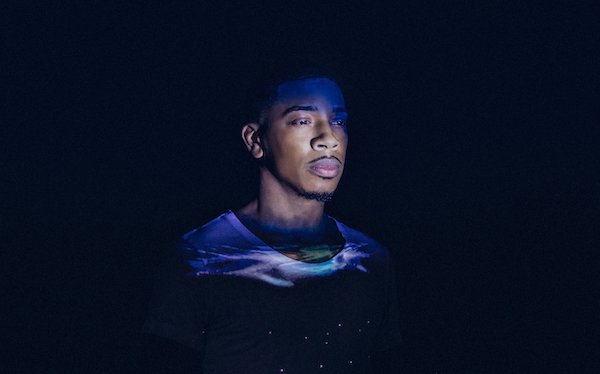Jun 3, 2025 11:25 AM
In Memoriam: Al Foster, 1943–2025
Al Foster, a drummer regarded for his fluency across the bebop, post-bop and funk/fusion lineages of jazz, died May 28…

The title of Christian Sands’ album Be Water nods to a quote by martial arts star Bruce Lee.
(Photo: Anna Webber)When Christian Sands turned 30 in May 2019, he felt an urge to take stock of his life. For some millennials, that exercise might be a bit deflating, but few of his peers have so many achievements to contemplate: piano prodigy at the age of four, leading gigs at 12 and playing with masters like Billy Taylor, Oscar Peterson and Herbie Hancock during his teens.
Sands’ studies at the Manhattan School of Music led to more success, including playing on one album by the MSM Jazz Philharmonic Orchestra and two by Bobby Sanabria. At 20, he began a six-year stint with bassist Christian McBride, and in 2017 he signed with Mack Avenue, which has just released his third album for the label, Be Water.
“Thirty is a big year for people because everything changes,” Sands said over Zoom while seated in front of the grand piano that dominates a room where he was spending the majority of his time during the coronavirus lockdown. “[At age 30], you’re not a young individual, but you’re not old, either. You are more specific about what you want to do. You make certain choices that really define who you are.”
His 30th birthday coincided with several events that helped define the form Be Water would take. Those included relocating to Stamford, Connecticut (40 miles from where he grew up in New Haven), encountering a doctor who suggested he consume more water, reading a book titled The Mysticism of Sound and Music: The Sufi Teaching of Hazrat Inayat Khan, and revisiting Bruce Lee’s classic martial-arts films, which he watched alongside his father when he was growing up.
“The final straw happened when I was performing in Hawaii,” Sands said. “My bassist, Yasushi Nakamura, and I had some time to kill after we checked out of the hotel. So, we went to this park, put our swimming trunks on and put our feet in the water. Out of the blue, this big sea turtle appeared, and it just kept coming closer until it was sitting right at our feet.”
It was then, Sands said, that he knew his next project would explore the concepts of water and flexibility, centered around a favorite quote of Lee’s: “Empty your mind. Be formless, shapeless, like water. ... Water can flow, or it can crash. Be water, my friend.”
While his previous two leader dates reflected his love of Hancock-style funk, Latin percussion, hip-hop and the mainstream swing that Taylor schooled him in, Be Water significantly expands his sonic palette to include the blues-inflected playing of guitarist Marvin Sewell, ethereal movements and a rollicking cover of Steve Winwood’s “Can’t Find My Way Home.” Frequent collaborators Nakamura, drummer Clarence Penn and saxophonist Marcus Strickland are on board, as are trumpeter Sean Jones and trombonist Steve Davis.

Foster was truly a drummer to the stars, including Miles Davis, Sonny Rollins and Joe Henderson.
Jun 3, 2025 11:25 AM
Al Foster, a drummer regarded for his fluency across the bebop, post-bop and funk/fusion lineages of jazz, died May 28…

“Branford’s playing has steadily improved,” says younger brother Wynton Marsalis. “He’s just gotten more and more serious.”
May 20, 2025 11:58 AM
Branford Marsalis was on the road again. Coffee cup in hand, the saxophonist — sporting a gray hoodie and a look of…

“What did I want more of when I was this age?” Sasha Berliner asks when she’s in her teaching mode.
May 13, 2025 12:39 PM
Part of the jazz vibraphone conversation since her late teens, Sasha Berliner has long come across as a fully formed…

Roscoe Mitchell will receive a Lifetime Achievement award at this year’s Vision Festival.
May 27, 2025 6:21 PM
Arts for Art has announced the full lineup for the 2025 Vision Festival, which will run June 2–7 at Roulette…

Benny Benack III and his quartet took the Midwest Jazz Collective’s route for a test run this spring.
Jun 3, 2025 10:31 AM
The time and labor required to tour is, for many musicians, daunting at best and prohibitive at worst. It’s hardly…